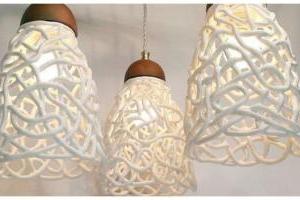
At the moment, sand-polymer paving slabs is almost the most popular product on the construction market. High-quality manufactured and evenly laid, it makes the street very attractive compared to ordinary, even very evenly laid asphalt or previously traditional concrete. Therefore, many businessmen and owners of private houses prefer this material.
The demand for services that are associated with paving slabs is becoming higher, despite the considerable cost of this material. If you are interested in the production of polymer-sand tiles, then you should prepare for a collision with a sufficiently large number of competitors, but at the same time, such a business can still be considered very promising.
Properties of polymer-sand tiles
- Resistance to external factors. This type of material perfectly copes with various precipitation. For tiles, disclosure to small abrasive parts is uncharacteristic, in addition, a high degree of resistance to various mechanical damage.
- Durability. The warranty from the manufacturers at the moment is 30 years.
- Decorativeness. Tiles can have any shape, surface type and color.
- Multiplicity in application.
- Polymer-sand tiles can be used anywhere, so the demand for these products is constantly increasing.
Business Registration
In order to start polymer production, it will be enough to get the registration of an individual entrepreneur. Paving slabs belong to a category of products that is not subject to special certification, and this greatly facilitates the entire process of business registration.
However, if you have a desire to have a document proving the proper quality of your products, you can order a study in the certification service, where the polymer sand tile will be checked for abrasion, strength, frost resistance and other properties. After that, you will be given a passport for product quality indicating the main characteristics.
Main job
This type of paving slab production involves the use of advanced technologies involving the processing of secondary raw materials, that is, polymer products should be obtained. This process indicates a change not only in thinking, but also in relation to the producers' profit.
Thanks to the ongoing global changes, we can talk about the transformation of the commodity economy into a modern high-tech form, which allows rational use of available resources, and not lead to environmental pollution. Naturally, such production requires considerable financial investments, however, they will quickly return after the start of work.
Essence of the process
The production of polymer products involves the presence of ordinary sand, dyes, as well as the corresponding material that was in use. The ratio of components for the manufacture of paving slabs should be as follows: 94% sand, 1% dyes and 5% polymer waste. The latter can be purchased fairly cheaply at recycling centers or at any landfill. This waste does not have to be cleaned of food and paper residues, as in the end it will all burn out, which will not affect the quality of the finished product.
You can use absolutely any polymer materials.Keep in mind that the old plastic film and used bags are soft polymers, and polystyrene, polypropylene and plastic bottles are hard polymers. The ratio of these two species in the final mixture is better to take in half. In Russia, the cost of a ton of such waste is in the range of 3,000 rubles.
Polymer technology involves the use of sand, the moisture content of which should not exceed 10%, and the content of impurities - not more than 20%. The price of sand is about 300-350 rubles per ton. The use of dye is not necessary, but without it, the products will have an unappealing color. Equipment for polymer-sand tiles consists of an extruder, a molding press and a melting and heating unit. The area required for the installation of all equipment, as well as for ventilation, should be at least 150 square meters.
Processing and manufacturing processes
In the extruder, polymer materials are heated, after which they are mixed and crushed into homogeneous small particles. Further, this prepared polymer material is mixed with sand and dye, after which the mass enters the melting and heating unit.
There, the polymers lend themselves to melting, and the rotating blades mix all of these components in a qualitative and uniform manner. The resulting mass is similar to a tough dough and is homogeneous. It is placed in a molding press, in special forms, which are then slowly cooled. To give shine products, the upper part in the mold is cooled much more slowly than the lower one.
Equipment
The production of paving slabs can be carried out in one of two ways - by vibrocasting or by vibropressing. Both options involve the use of specialized equipment. For production by means of vibrocasting, a vibrating table is required, the cost of which is approximately $ 4,000, molds of $ 1-18 each are still needed, as well as a concrete mixer for about $ 800. The vibrocompression method will require you to have other equipment: a vibrocompressor, which costs about $ 20,000, a concrete mixer at the price of 5000-6000 dollars, a punch - $ 3000.
Manufacturing process
Since polymer production can be carried out in one of two ways, it is necessary to describe the technology for each of them. The vibrocompression method, in addition to the application for the manufacture of tiles, is often used to create curbs, wall and partition stones, and more. This method includes the following steps.
- Concrete preparation. For its preparation, a concrete mixer is used. In the case of the production of a single-layer product, one device is required, for a two-layer product, two. After the mixture is formed, it must be placed in the vibrating press matrix.
- Molding. After loading the molding sand into the matrix, the work of the punch and vibrators begins. Compaction of the material occurs due to the influence of vibration pulses. This operation takes 305 seconds. Further, the matrix and the punch rise, and the products remain on a special pallet. It is sent for drying, and the production of another batch of tiles is carried out on the next pallet.
- Drying. To obtain the finished tile, it is necessary to dry it using the heat-wet method. For these purposes, water vapor is used. To reduce production costs, sand-polymer tiles can go through the drying phase in the production room without using heat and moisture treatment. When the strength of concrete will be 1.5-2 MPa, you can remove the tiles from pallets. It usually takes 5-8 hours to achieve this strength.
The second production method is the method of vibrocasting. It is slightly different from the first. Sand-polymer tile is made by this method as follows:
- first the concrete mix is prepared;
- then the latter fits into special forms located on the vibrating table;
- Further forms are placed on pallets;
- 48 hours, it is necessary to withstand the form with the mixture in vivo;
- products are knocked out of forms on a vibrating table.
For the last stage, the products are heated at temperatures up to 60-70 degrees Celsius for about two minutes, after which they should be knocked out on a vibrating table.

The choice of premises for the organization of production
Polymer production can be placed in any room, that is, there are no specific requirements for it. The main one is a sufficient area for arranging equipment, from 70 square meters or more. It is important that a voltage of 360 volts is available in the room. You should look for a place for the drying chamber, where the temperature should be approximately 35-45 degrees.
Staff
When organizing a workshop whose productivity does not exceed 50 square meters of tiles per day, three workers will be quite enough. They control all polymer production. Their responsibilities include concrete preparation, filling out forms, pressing control, and drying of products.
Business profitability
If we talk about how profitable the production of polymer-sand tiles is, then experts call 100-135%. It turns out that this is a very profitable business. Of course, the production process cannot do without a certain percentage of defective products, but they can also be used wisely, for example, in the construction process.
Sales
When the polymer production is fully established, you can begin to sell finished products. To attract the maximum number of customers, it is necessary to provide them with a wide selection of types of products, so it is advisable to make tiles of different shapes, sizes and colors. Do not at the initial stage strive to receive large orders. It is better to start the path with establishing relationships with individuals and small business owners who intend to purchase tiles to decorate their territories.
Advantages and disadvantages of such a business
The whole picture seems very beneficial. Everyone can start polymer production. A relatively simple manufacturing process, quick payback, high profitability - all this can be called the advantages of such a business. However, there are also disadvantages. First of all, we can talk about the seasonality of orders. In addition, it is difficult to call this activity interesting, since the production process is quite monotonous and boring.

The final stage
After you draw up a business plan, you can begin the opening of the production process itself, where polymer sand tiles will be created. First you need to register with the administration, where you write a statement stating your desire to become an entrepreneur and open your own paving slab production.
After submitting the application and registering it within two to three days, you should be issued a certificate that will automatically make you an entrepreneur. Further, you are required to register with the tax service within three days after receiving the certificate. There you will have to choose the form and code of activity, as well as the type of business.
Now you can choose a room or prepare for an already selected one. It all depends on the planned production volumes. The room should have concrete floors, lighting and running water. It is advisable to have a canopy near the building, as you will store materials on site.








